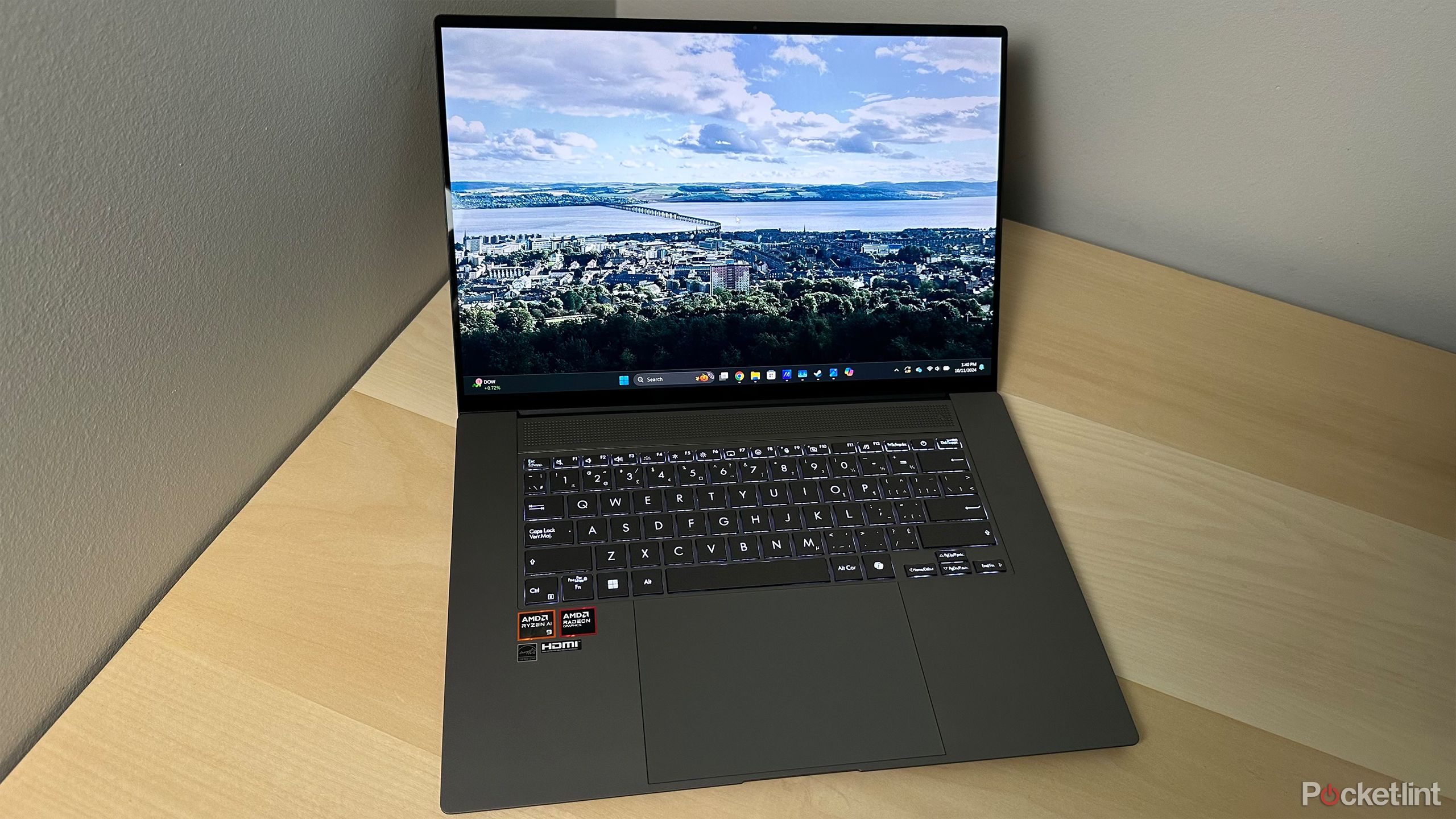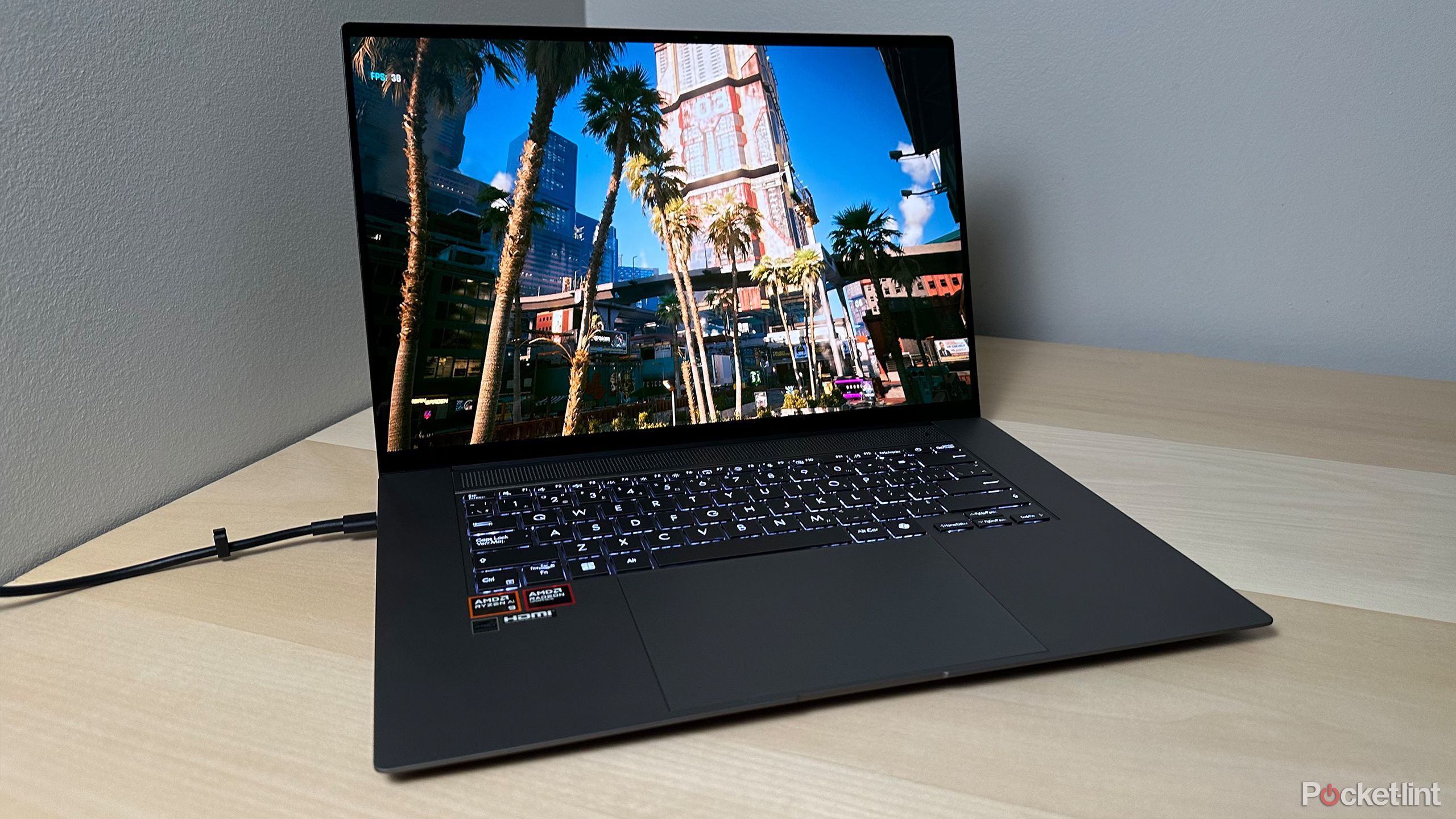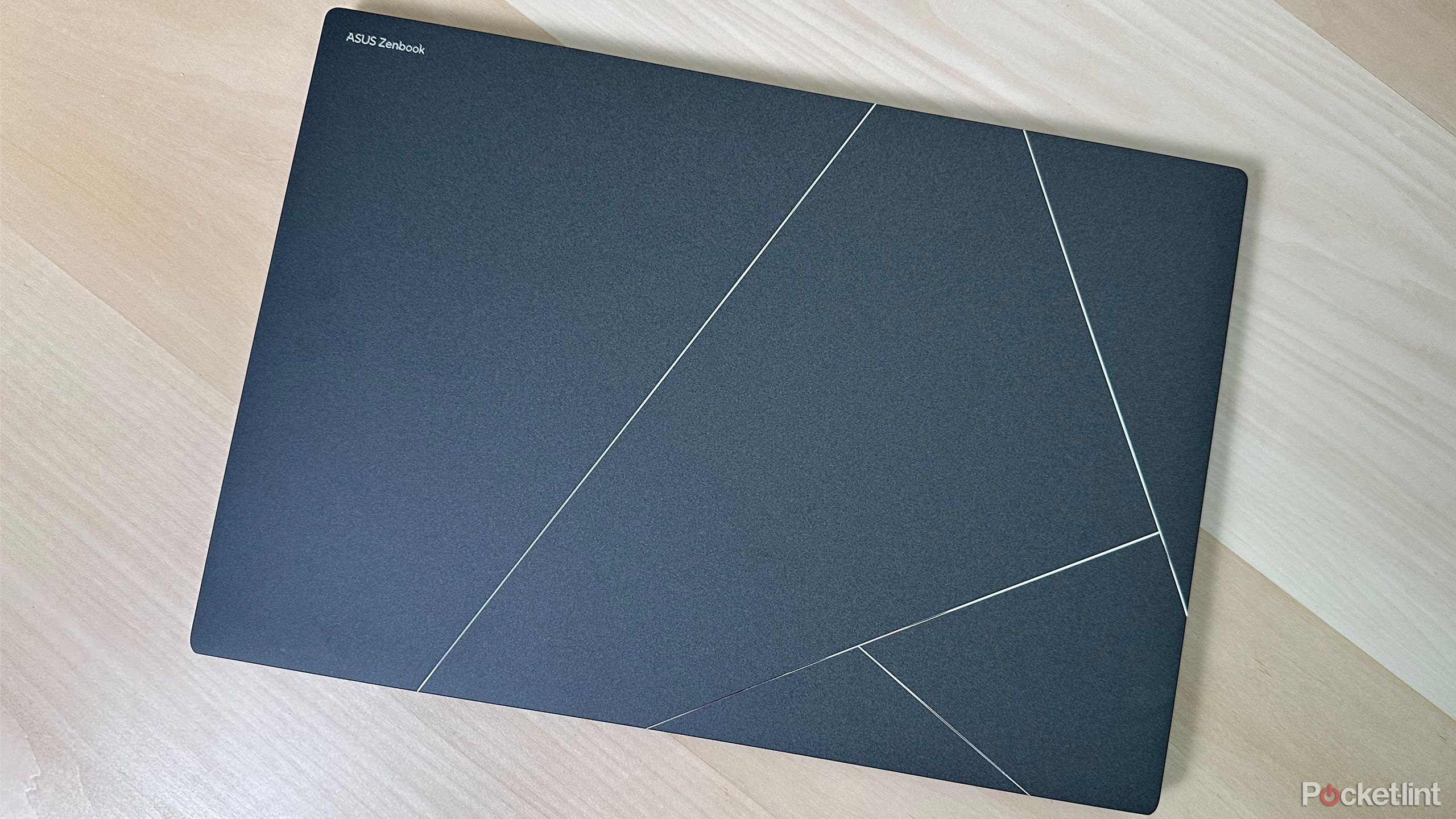Key Takeaways
- The Asus Zenbook S 16 is an ultrathin portable Windows 11 laptop.
- Its AMD Ryzen AI processor ensures smooth performance for everyday productivity tasks.
- The laptop has a 16-inch 3K OLED display with a 120Hz refresh rate that provides stunning visuals for watching shows and movies.
I’m not going to mince words here — I love the Asus Zenbook S 16. Within an hour of using it, I was stunned not only by its design but also by its performance capabilities. My feelings are the same even after using it for a few weeks. Its AMD Ryzen AI chipset packs a punch, and I’m impressed by what Asus has accomplished with this laptop. It’s lightweight and thin build makes this a compelling 16-inch on-the-go laptop, especially if you find it on sale from its starting price of $1,400.
The Asus Zenbook S 16 has been nothing short of crazy. Intel and AMD are pushing new AI-powered chips with neural processing units (NPUs), and Snapdragon-powered Windows 11 laptops are making a splash. Plus, Apple is expected to announce new M4 MacBooks before the end of the year. If you’re looking for a new laptop, the market has never been so diverse. If you’re specifically looking for a powerful thin 16-inch Windows 11 laptop, the Asus Zenbook S 16 may be what you’re looking for.

Recommended
Asus Zenbook S 16
The Asus Zenbook S 16 is an ultrathin 16-inch 3K 120Hz laptop. With an AMD Ryzen AI processor, it delivers powerful performance and visuals for everyday use.
- Unique and distinct design
- Powerful AMD AI processor
- 120Hz OLED screen
- Battery life isn’t as good as competitors
- Integrated graphics could be better

See our process
How we test and review products at Pocket-lint
We don’t do arm-chair research. We buy and test our own products, and we only publish buyer’s guides with products we’ve actually reviewed.
Price, availability, and specs
The Asus Zenbook S 16 is a 16-inch laptop with a 2880 x 1800 pixel resolution display with a 120Hz refresh rate. Its display has 400 nits of brightness and up to 500 nits of HDR peak brightness. The display is touchscreen and has pen support.
The laptop weighs 3.3lbs (1.5kg) and its dimensions come in at 13.92 x 9.57 x 0.47~ 0.51-inches (35.36 x 24.30 x 1.19 ~ 1.29 cm). Due to its wedge-shaped design, the laptop is thinner towards the front and slightly thicker at the back. It has a 78Wh battery.
The Asus Zenbook S 16 starts at $1,400 and is available now in two configurations and color options.
The more expensive configuration comes with an AMD Ryzen AI 9 HX 370 12-core processor that boosts up to a 5.1GHz clock speed. It also has an integrated AMD Radeon 890M GPU, 32GB of RAM, and a 1TB NVMe SSD.
The cheaper configuration comes with an AMD Ryzen AI 9 365 10-core processor that boosts up to a 4.7GHz clock speed. It also has an integrated AMD Radeon 880M GPU, 24GB of RAM, and a 1TB NVMe SSD. I will be reviewing this model.
Both configurations also have an AMD XDNA neural processing unit (NPU) capable of up to 50 trillion operations per second (TOPS).
Looking at the port selection, the left side of the Zenbook S 16 sports one HDMI 2.1 port, two USB 4.0 Gen 3 Type-C with display and power delivery capabilities and one 3.5mm audio jack. The right side sports an SD card reader, a USB 3.2 Gen 2 Type-A port, and a charging LED.
Windows Hello is supported by the Asus Zenbook S 16 thanks to its front 1080p webcam with IR function.
The Asus Zenbook S 16 is available in two color options: zumaia gray or scandinavian white. This review features the zumaia gray color.
What I liked about the Asus Zenbook S 16
A unique Ceraluminum lid design and a beautiful display
Immediately upon opening the box, I was stunned by the Zenbook’s Ceraluminum lid design. Asus says its new “high-tech ceramic” Ceraluminum material boasts “unparalleled strength” and increased durability. I was pretty impressed with this new material, and I like how it’s distinctively different from Apple’s MacBook lineup or other Windows laptops. The Ceraluminum lid on the Zenbook S 16 is smooth and feels great to hold in hand, thanks to its light weight of 3.31 lbs. Also, as someone who prefers a super minimal look on a laptop, I think Asus has done a great job creating a distinct, clean design.
This screen has everything you could want from a 16-inch display, thanks to its beautiful bright colors, 120Hz refresh rate, and thin bezels.
Speaking of the lid, the Asus Zenbook S 16 passes the essential test of being able to open the lid with one hand or one finger. Behind the lid is a gorgeous 3K OLED display. This screen has everything you could want from a 16-inch display, thanks to its beautiful bright colors, 120Hz refresh rate, and thin bezels. The 16:10 aspect ratio is perfect, and I love the extra vertical screen real estate space here. I watched the finale of Rings of Power on this laptop, and wow, I was blown away by how fantastic it looked. Whether browsing the web, playing a game, or writing this review, the display never failed to impress me. After using this laptop for a few weeks, I’m more persuaded than ever to get an OLED monitor for my gaming PC.
The AMD Ryzen AI 9 365 processor performed well in my testing. Productivity tasks are no challenge for this laptop, and it kept up with all the daily tasks I threw at, such as photo editing, researching, and writing. For reference, the Asus Zenbook S 16 achieved a Geekbench 6 score of 2,802 in single-core and 12,799 in multi-core. This is designed to be a light on-the-go laptop, so for everyday productivity tasks the performance is more than enough, but if you’re looking to do heavy video editing or gaming, you may want to look at other laptops. I also found the laptop to be silent during basic tasks, with the fans only spinning up when opening up a game.
For reference, the Asus Zenbook S 16 achieved a Geekbench 6 score of 2,802 in single-core and 12,799 in multi-core.
The laptop also features a dedicated AI chip, an AMD XNDA NPU that Asus says processes up to 50 trillion operations per second (TOPS) of performance for the local processing of AI tasks, such as Copilot and Asus’ AI. The MyAsus app has an AI Noise-cancelling microphone and AI Noise-Cancelling speaker setting. The NPU can also be used for Windows Studio effects, which applies AI-powered effects to your camera, such as a background blur and automatic eye contact. While testing these features, I could see the NPU being engaged in task manager, and it was doing its job of taking some load off the CPU. Copilot+ features aren’t available on the Asus Zenbook S 16 yet, but more on that later.
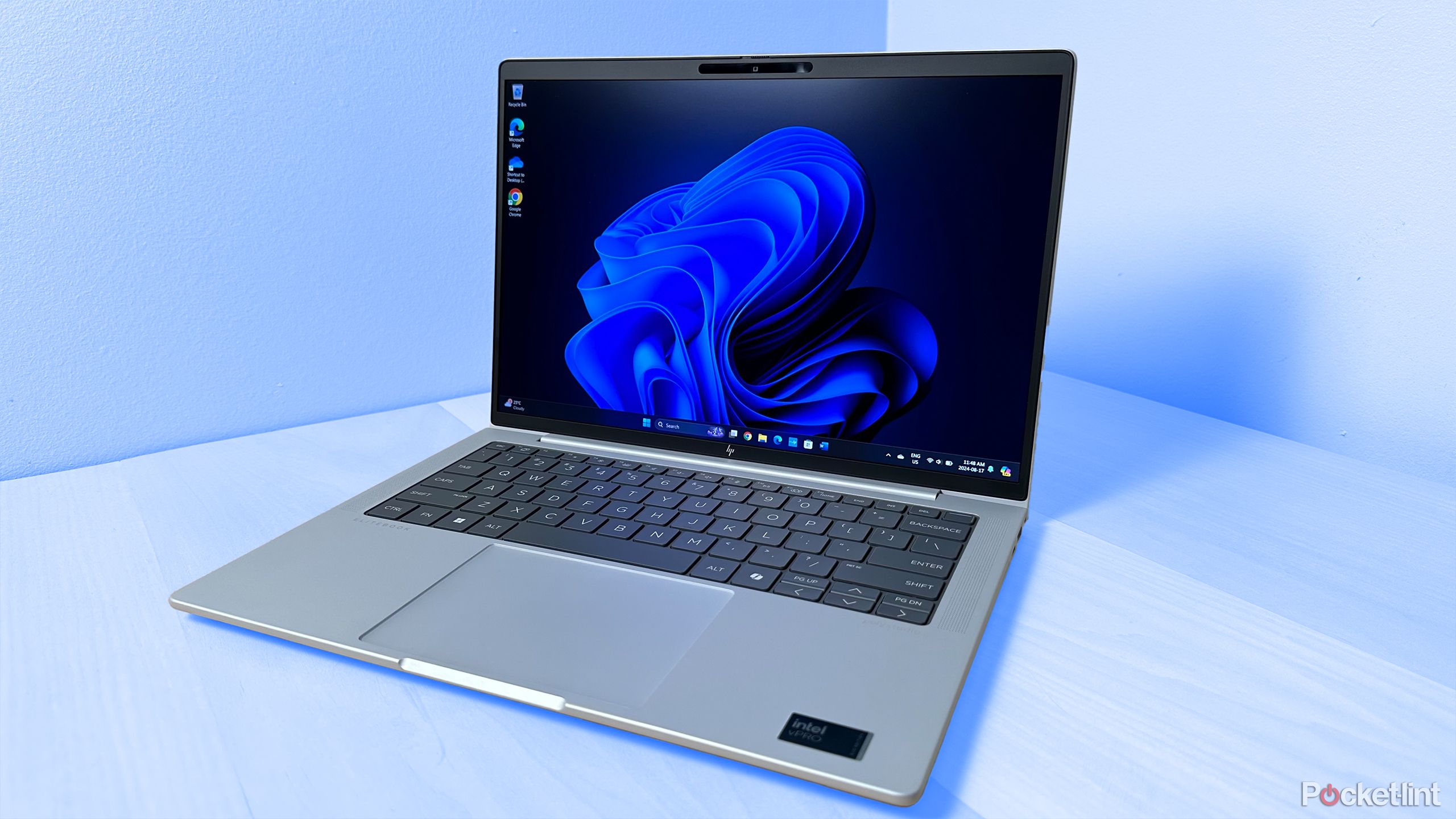
Related
This HP EliteBook laptop brings the AI and speed I want to my work setup
The HP EliteBook 1040 G11 is a reliable and powerful 14-inch business laptop that offers strong performance and useful AI features.
Windows Hello is a welcome feature on the Zenbook S 16, thanks to the 1080p front webcam with IR support. I love how Windows Hello allows you to set up an additional recognition scan to improve its accuracy. I was able to do a scan with and without my glasses, which helped recognition. This laptop also supports Windows Presence Sensing, which turns your screen automatically on and off based on whether you are in front of the laptop. I like this feature, and it is convenient that the display automatically turns off when I walk away and turns back on when I return to my desk.
If you type often, the keyboard on the Zenbook S 16 will not disappoint. I found the typing experience pleasant and comfortable with a 1.1mm key-travel distance, and I had no issues working and typing on this laptop for long hours. There is also a dedicated Copilot key for quick access to any AI inquiries. The touchpad is nice and large and supports gestures, such as changing the system brightness by swiping the bottom or adjusting the system volume by sliding up and down the left side of the trackpad. A haptic touchpad would’ve been nice, but it isn’t a dealbreaker for me.
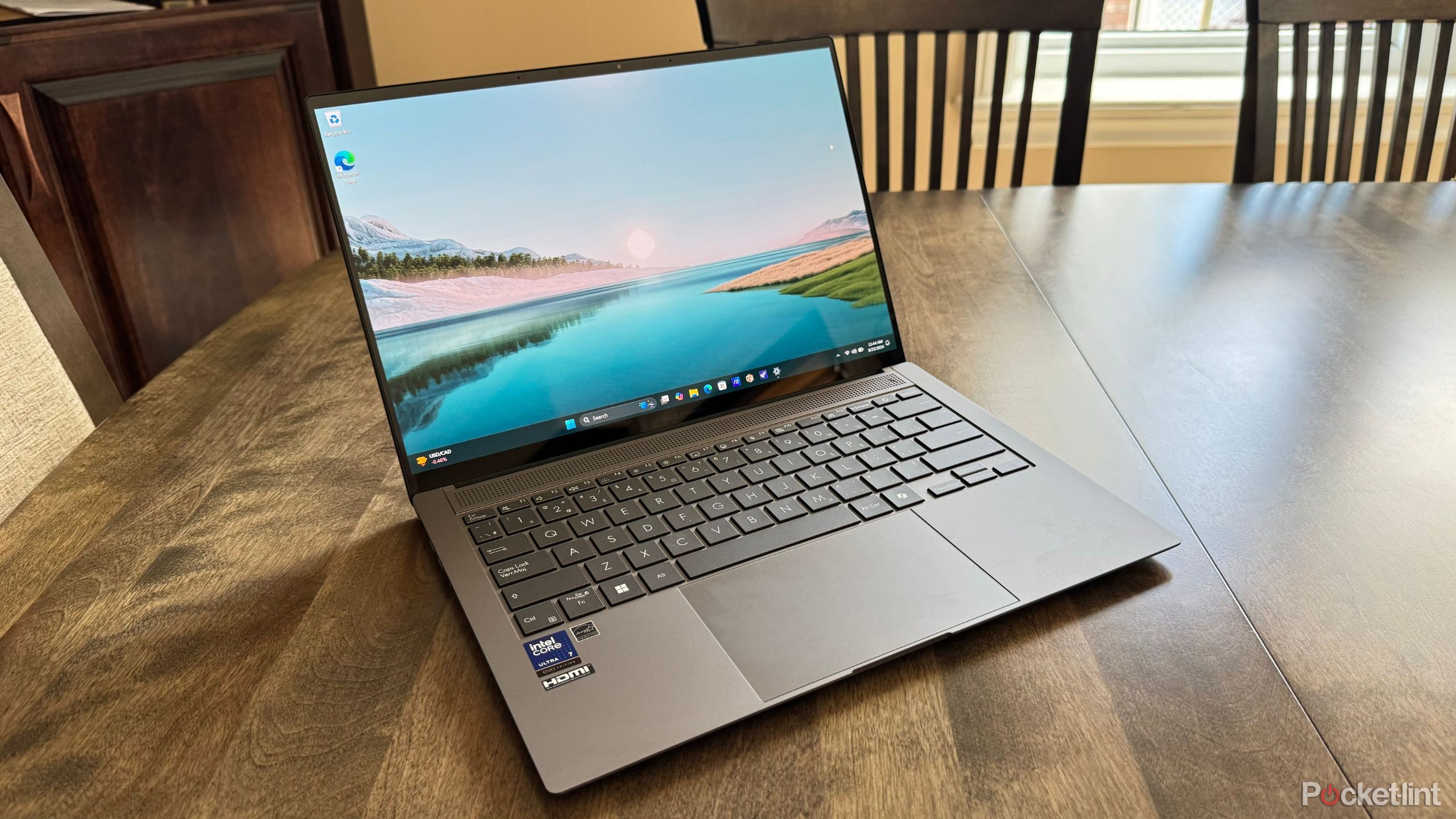
Related
Asus’ Zenbook S 14 delighted me with its OLED display and its fast performance
The new Asus Zenbook S 14 is an excellent Windows laptop that both looks and feels high-end.
What I didn’t like about the Asus Zenbook S 16
Battery life isn’t bad, but could be better, and the integrated graphics leave more to be desired
The battery life on the Asus Zenbook S 16 gives me mixed feelings. Is it bad? No. On average, I got 8-10 hours of use before I had to plug it in. This involved browsing the web, using Google Docs, and watching YouTube videos and TV shows. So, for my use case, I could get all-day battery life out of it, but just barely. When gaming, I kept the laptop plugged in. For an x86 architecture laptop, the battery life is decent. But it’s difficult not to think of the Snapdragon X Windows 11 laptops and Apple’s M3 MacBooks, which have better battery life than this. If you primarily use your laptop for productivity tasks, that extra couple of hours could make quite a difference.
Copilot+ features are also unavailable to test at the time of writing. Currently, Copilot+ features are only available on Snapdragon X Windows 11 laptops. However, they are supposed to be available on select Windows 11 AMD and Intel AI chipsets in November through a Windows update.
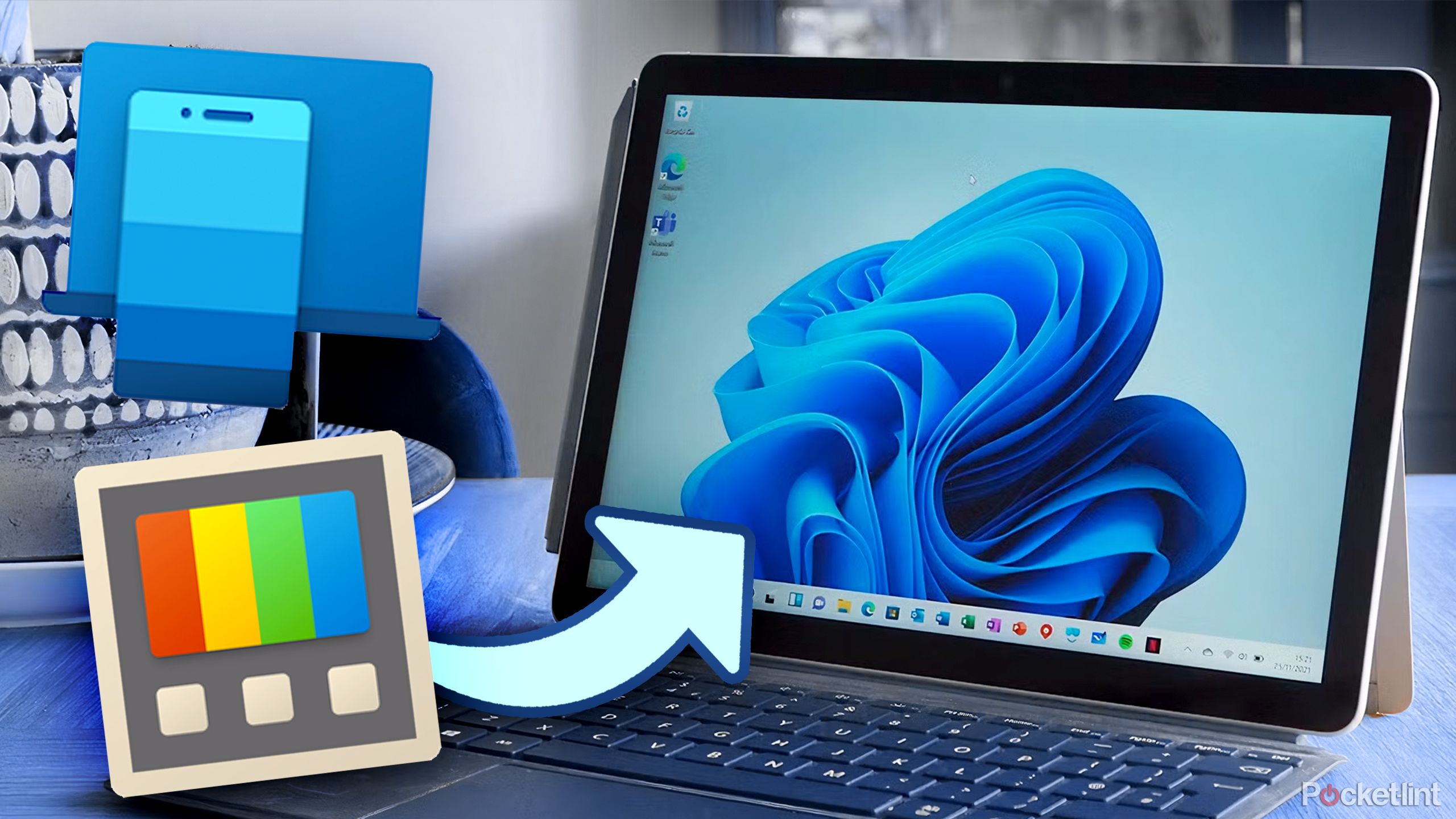
Related
I use these 7 easy Windows tweaks to optimize usability and make my life easier
Windows 11 can be unnecessarily complicated. Make it more user-friendly and streamline your experience with these seven tweaks.
Also, to take full advantage of the 120Hz display, I had to disable the dynamic refresh rate setting in the MyAsus app. The dynamic refresh rate made it so the display would only be 120Hz when plugged in. When the laptop was unplugged, it would be at 60Hz. I wanted the display to be 120Hz all the time, so I disabled this setting. 120Hz should be enabled right out of the box; it makes a world of difference.
The Asus Zenbook S 16 also suffers from the same problem the Asus Zenbook S 14 has: both USB Type-C ports are on the same side of the laptop. I noticed this almost immediately as I went to charge the laptop by plugging it on the right side, only to realize the port was only on the left side. The even funnier thing to me is that the battery charging LED isn’t beside the charging port; instead, it’s on the right side of the laptop. So, you charge the laptop from the left and check to ensure it’s charging on the right. I’m unsure why this design choice was made, but it’s odd.
The Asus Zenbook S 16 does have an integrated GPU, an AMD Radeon 880M or 890M, depending on the configuration chosen. I tested the 880M configuration, and the integrated GPU was okay, but don’t expect to play anything on high graphics. I tested Cyberpunk 2077 and Assassin’s Creed Mirage and got a playable frame rate (40-60 fps) in both games by lowering the resolution. In Cyberpunk 2077, I used the Steam Deck option in the graphics setting, which worked fine. But during both play tests, this laptop heated up to the point where it was uncomfortable to touch. This laptop is very thin, so it is very easy for this thing to get hot fast. In all fairness, the Asus Zenbook S 16 isn’t a gaming laptop, so if you’re not pushing this thing to the max all the time, this might not be a dealbreaker for you. If you’re looking for something to primarily play games on, you want a laptop with a dedicated GPU, and at $1,700 for the top Zenbook S 16 configuration, it feels like it should have one.
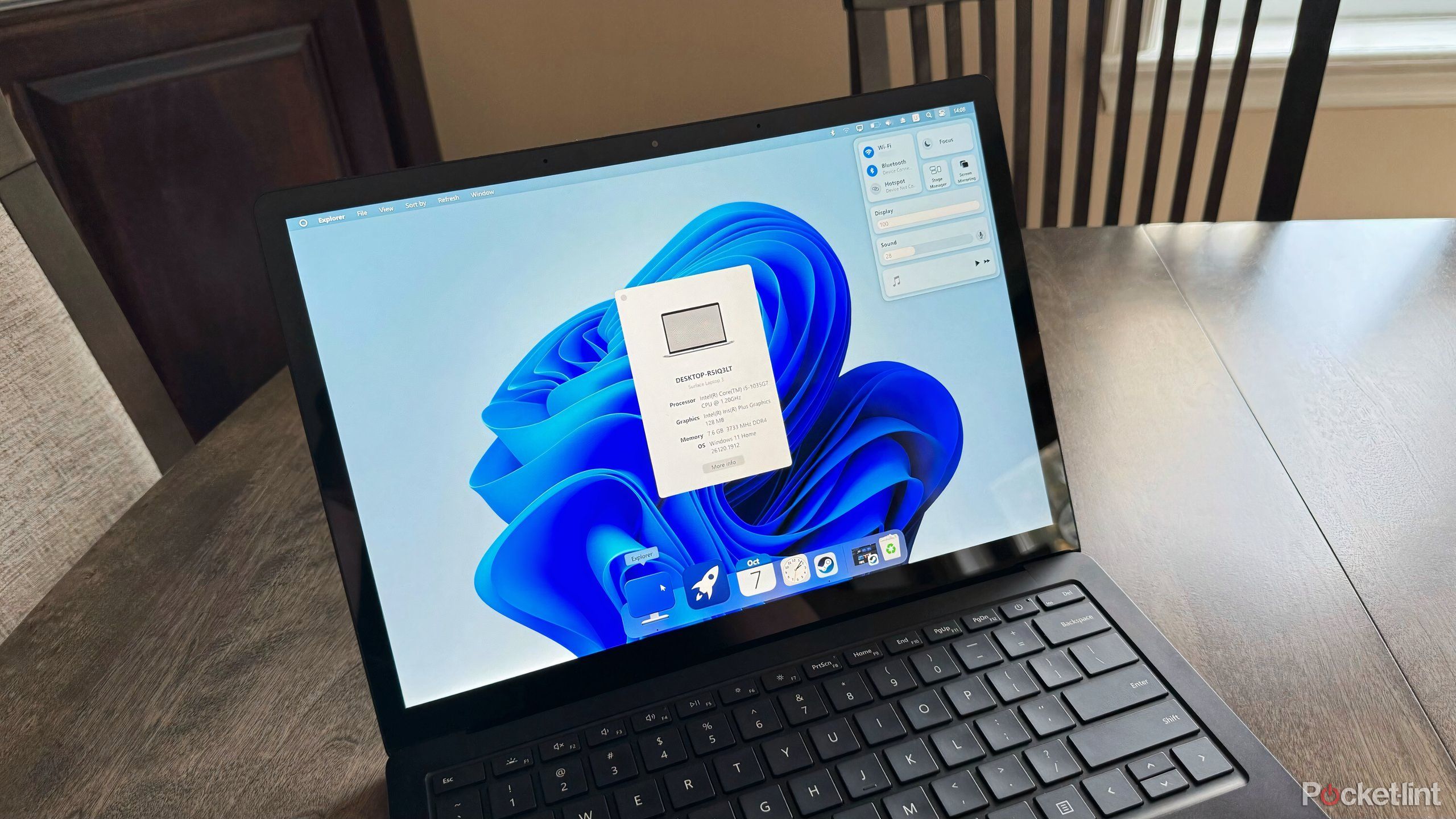
Related
The 5 steps I take to make Windows 11 look and feel more like macOS
Without too much work, you can set up any Windows 11 PC to function more like an Apple Mac — here’s how.
Should you buy the Asus Zenbook S 16?
If you’re looking for a 16-inch Windows 11 PC that is thin, portable, and powerful, the Zenbook S 16 is worthy of consideration
After using a M1 MacBook Pro as my daily driver for over three years, the Zenbook S 16 makes me think it may be time to return to a Windows laptop soon. Its AMD AI CPU is powerful enough to handle everyday productivity tasks without breaking a sweat. Its 3K 120Hz display is stunning and looks great for working during the day and watching media. Its Ceralumium design is unique, lightweight, and looks as great as it feels. And all these features help improve the Windows 11 user experience. It almost felt strange to return to my Macbook Pro after using it for so long, especially since I also use a Windows 11 desktop at home.
The battery life isn’t as good as that of the Snapdragon X Windows 11 laptops. However, its x86 architecture AMD CPU does mean it avoids any compatibility issues that ARM architecture-based Snapdragon X processors currently face with some applications. The $1400 model seems like the best option to me (even better if on sale), especially if you’re just using the laptop for basic tasks. If you’re in the market for a thin and light 16-inch Windows laptop for everyday use, the Asus Zenbook S 16 won’t disappoint.
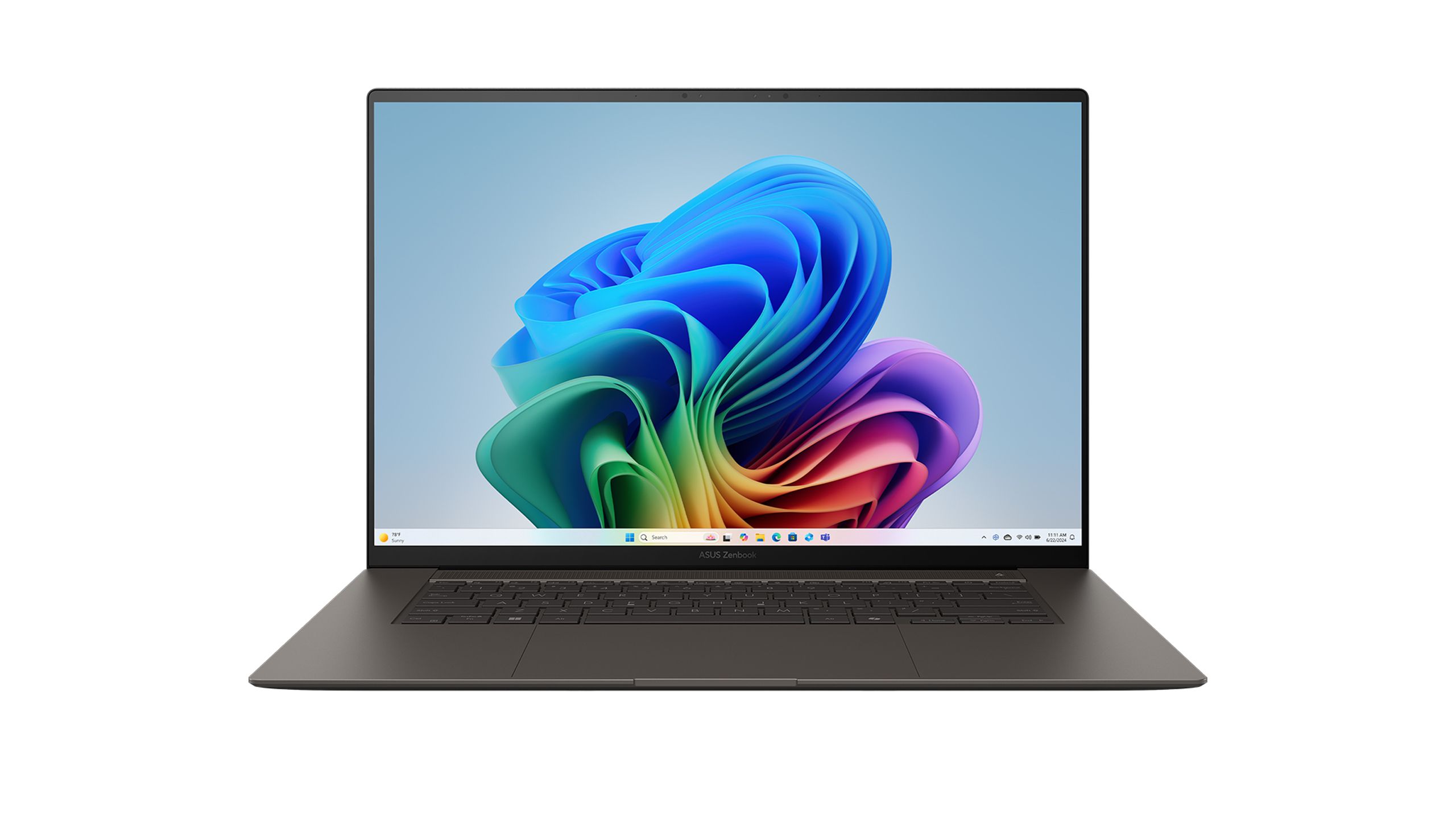

Recommended
Asus Zenbook S 16
Trending Products

Cooler Master MasterBox Q300L Micro-ATX Tower with Magnetic Design Dust Filter, Transparent Acrylic Side Panel…

ASUS TUF Gaming GT301 ZAKU II Edition ATX mid-Tower Compact case with Tempered Glass Side Panel, Honeycomb Front Panel…

ASUS TUF Gaming GT501 Mid-Tower Computer Case for up to EATX Motherboards with USB 3.0 Front Panel Cases GT501/GRY/WITH…

be quiet! Pure Base 500DX Black, Mid Tower ATX case, ARGB, 3 pre-installed Pure Wings 2, BGW37, tempered glass window

ASUS ROG Strix Helios GX601 White Edition RGB Mid-Tower Computer Case for ATX/EATX Motherboards with tempered glass…


